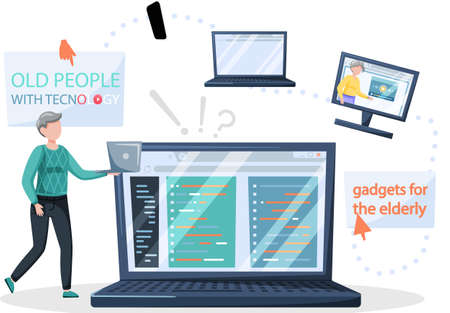Overview of U.S. Crowdfunding Landscape
Crowdfunding has completely changed the way people in the United States raise money for new ideas, creative projects, and small businesses. Over the past decade, online crowdfunding platforms have made it possible for anyone with a dream to connect directly with supporters across the country—and even around the world. This new approach has helped launch everything from innovative tech gadgets and films to local businesses and community projects.
At its core, crowdfunding is about bringing together a large group of people, each contributing small amounts of money, to fund something meaningful or exciting. Before these platforms existed, entrepreneurs and creators often had to rely on banks, venture capitalists, or personal savings. Now, thanks to user-friendly websites and social media sharing tools, raising funds is more accessible than ever.
The Evolution of Crowdfunding in the U.S.
The first major crowdfunding platforms appeared in the late 2000s. They quickly grew in popularity because they offered a simple way for project creators to reach thousands of potential backers. Over time, these platforms have become more specialized—some focus on creative projects, others on startups or charitable causes. Crowdfunding in the U.S. has also benefited from supportive regulations that allow both donation-based and investment-based models to flourish.
Why Crowdfunding Matters
Crowdfunding plays a key role in promoting innovation and entrepreneurship across America. It helps level the playing field by giving everyone—not just those with wealthy connections—a chance to turn their ideas into reality. Crowdfunding also lets creators validate their concepts before investing heavily, since public support is a strong signal that an idea has real potential.
Main Types of Crowdfunding Platforms
| Type | Description | Examples |
|---|---|---|
| Reward-Based | Backers receive a reward (like a product or experience) for their support. | Kickstarter, Indiegogo |
| Equity-Based | Supporters invest money in exchange for a share of the business. | SeedInvest, StartEngine |
| Donation-Based | People give money to support causes without expecting anything in return. | GoFundMe |
This overview sets the stage for comparing the top five U.S. crowdfunding platforms—their features, fees, and success rates—to help you choose the best option for your next big idea.
2. Key Features of the Top Five Platforms
When choosing a crowdfunding platform in the U.S., it’s important to understand what each site offers. Here’s a side-by-side look at the standout features of the five leading platforms: Kickstarter, Indiegogo, GoFundMe, Patreon, and SeedInvest. We’ll compare their campaign types, customization options, and overall user experience so you can find the best fit for your project or cause.
Platform Features at a Glance
| Platform | Main Campaign Types | Customization Options | User Experience |
|---|---|---|---|
| Kickstarter | Creative projects (art, tech, games) | Custom pages, reward tiers, video integration | Sleek interface; strong community; all-or-nothing funding |
| Indiegogo | Creative projects, products, social causes | Flexible funding choices, perks system, branding options | User-friendly; flexible or fixed funding; global reach |
| GoFundMe | Personal causes (medical, emergencies), nonprofits | Simple story builder, photo/video uploads, team fundraising | Easy setup; no deadlines; fast payouts |
| Patreon | Ongoing content creation (artists, podcasters) | Tiers for supporters, exclusive content delivery | Subscription-based; direct creator-fan connection; steady income stream |
| SeedInvest | Equity crowdfunding for startups & businesses | Business profiles, investor updates, document sharing | Professional feel; investor-focused; SEC-compliant process |
Understanding Campaign Types and Flexibility
Kickstarter: Focuses on creative ideas—think gadgets, games, films. You must hit your goal to receive funds (“all-or-nothing”).
Indiegogo: Welcomes both creative projects and social campaigns. Offers “fixed” (all-or-nothing) and “flexible” (keep what you raise) options.
GoFundMe: Best for personal needs and emergencies. No deadlines or minimum goals.
Patreon: Works like a membership platform for ongoing support rather than one-off campaigns.
SeedInvest: Designed for startups looking to raise capital from investors—campaigns are more formal and regulated.
Customization Options That Matter
The ability to tell your story matters. Kickstarter and Indiegogo offer plenty of ways to make your page pop with videos and photos. GoFundMe keeps things simple but lets you update supporters easily. Patreon’s focus is on building membership tiers and offering exclusive perks. SeedInvest allows detailed business profiles and investor communications.
User Experience Across Platforms
If you want an easy start and fast setup for personal fundraising, GoFundMe is hard to beat. Kickstarter and Indiegogo offer more tools for creatives who need to build excitement around a product launch. Patreon is perfect if you’re seeking steady monthly support from fans. For startups wanting investment dollars, SeedInvest provides a professional process that appeals to serious backers.
This comparison helps highlight which platform aligns best with your goals based on features that matter most—whether you’re starting a new business or just need help covering an unexpected expense.

3. Fee Structures and Payment Processing
Understanding the cost of running a crowdfunding campaign is key to planning your budget and setting realistic fundraising goals. The top five U.S. crowdfunding platforms—Kickstarter, Indiegogo, GoFundMe, Patreon, and SeedInvest—each have their own fee structures, payment processing charges, and withdrawal schedules. Here’s what you need to know:
Platform Fees at a Glance
| Platform | Platform Fee | Payment Processing Fee | Withdrawal Schedule |
|---|---|---|---|
| Kickstarter | 5% of total funds raised | 3% + $0.20 per pledge | 14 days after campaign ends |
| Indiegogo | 5% of funds raised (Flexible or Fixed) | 2.9% + $0.30 per transaction | Within 15 business days after campaign ends |
| GoFundMe | No platform fee for personal campaigns; 5% for charity campaigns | 2.9% + $0.30 per donation | Rolling withdrawals available; funds usually in 2-5 business days |
| Patreon | 5%-12% depending on plan (Lite, Pro, Premium) | 2.9% + $0.30 per pledge (may vary by country) | Monthly or on-demand payouts depending on creators settings |
| SeedInvest | 7.5% placement fee + 5% equity fee (for successful raises) | $0–$1000 admin fee depending on raise size; additional legal fees may apply | Payouts after investment round closes and legal review completes |
The Real Cost: What to Watch Out For
The headline platform fee is just one piece of the puzzle. Every dollar donated or pledged is also subject to payment processing fees that cover the cost of credit card transactions and bank transfers. On some platforms, these small charges can add up fast, especially if you receive lots of small donations instead of a few big ones.
Payout Timing Matters Too
If you need funds quickly, pay attention to each platform’s withdrawal schedule. Kickstarter and Indiegogo require you to wait until your campaign finishes before releasing funds, while GoFundMe offers rolling withdrawals for greater flexibility. Patreon pays out monthly or whenever you request it, making it a good fit for ongoing creative projects.
Pro Tip:
Always read the fine print! Some platforms may charge additional fees for currency conversion, failed payments, or expedited transfers.
Success Rates and Factors Influencing Outcomes
When choosing a crowdfunding platform in the U.S., its essential to look beyond just fees and features. Success rates—the percentage of campaigns that reach their funding goals—can vary widely between platforms, and understanding what affects these numbers can help you plan a winning campaign. Below is a comparison of published success rates for the top five U.S. crowdfunding platforms:
| Platform | Success Rate (%) | Notable Factors |
|---|---|---|
| Kickstarter | ~39% | All-or-nothing, creative focus, strong community |
| Indiegogo | ~17% | Flexible funding option, global reach, tech/gadgets popular |
| GoFundMe | ~10-12% | No deadline, personal causes, social sharing driven |
| SeedInvest | ~1-2% (application acceptance) | Equity-based, high vetting, investor focus |
| Fundable | N/A (private data) | Business startups, subscription fees, requires outreach effort |
Main Factors That Influence Crowdfunding Outcomes
While each platform has its strengths, several universal factors will make or break your campaign:
Audience and Community Support
The size and engagement level of your network matter. Platforms like Kickstarter have built-in audiences who are ready to back new creative ideas. However, even with a large platform audience, most successful projects still rely heavily on personal contacts and pre-existing supporters for their initial momentum.
Campaign Design and Storytelling
Your pitch needs to be clear and compelling. Campaigns with strong visuals, engaging videos, detailed descriptions, and transparent budgets tend to outperform those without. A well-crafted story helps backers connect emotionally to your project.
Promotion and Outreach Efforts
No matter the platform, simply launching a campaign isnt enough. Successful fundraisers use email marketing, social media outreach, press releases, and even local events to spread the word. Early traction is critical; platforms often feature trending campaigns that gain rapid support.
Platform Support and Tools
Crowdfunding sites offer different levels of support—ranging from campaign consultants (Indiegogo) to robust analytics dashboards (Kickstarter). These tools can help you track progress and optimize your strategy as you go.
A Quick Tip:
If youre aiming for a higher success rate, consider not only which platform aligns with your project type but also how much effort youre willing to put into building buzz before your campaign launches.
5. Choosing the Right Platform for Your Project
Picking the best crowdfunding site can make or break your project. Each platform in the U.S.—like Kickstarter, Indiegogo, GoFundMe, Patreon, and SeedInvest—caters to different needs, so it’s important to match your goals with the right site. Here’s how you can decide which platform fits your project best.
Understand Your Project Goals
First, think about what you want to achieve. Are you launching a new product, raising money for a personal cause, supporting creative work, or looking for equity investment? Your main goal will guide you toward the most suitable platform.
| Platform | Main Focus | Best For |
|---|---|---|
| Kickstarter | Creative projects (art, tech, design) | Inventors, artists, startups with tangible rewards |
| Indiegogo | Innovative ideas & products | Flexible funding needs, global reach |
| GoFundMe | Personal causes & emergencies | Charity, medical expenses, community support |
| Patreon | Ongoing creative work | YouTubers, podcasters, writers seeking monthly support |
| SeedInvest | Equity crowdfunding for startups | Startups looking for investors (not just donations) |
Consider Industry Focus and Audience
Certain platforms are better recognized in specific industries. For example, Kickstarter is popular with tech and design communities, while Patreon is where creators build ongoing relationships with fans. If you’re seeking charitable donations for a local cause, GoFundMe is likely your best bet.
Real-World Examples:
- A designer with a new smartwatch: They chose Kickstarter to leverage its large community of tech enthusiasts and benefit from all-or-nothing funding.
- An independent musician: She uses Patreon to get monthly support from her fanbase for exclusive content and behind-the-scenes access.
- A family facing unexpected medical bills: They turned to GoFundMe because it’s trusted for personal fundraising and easy sharing on social media.
- A startup seeking investors: The founders went with SeedInvest since it connects them with accredited investors interested in equity opportunities.
- A nonprofit wanting to launch a flexible campaign: Indiegogo allowed them to keep funds even if they didn’t hit their target.
Look at Fees and Success Rates
The cost of running a campaign varies by platform. Some charge flat fees; others take a percentage of funds raised. Also look at typical success rates—sites like Kickstarter have an all-or-nothing model which means if you don’t reach your goal, you get nothing (but this can motivate backers!). Others like Indiegogo offer flexible funding options.
| Platform | Main Fee Structure | Success Model |
|---|---|---|
| Kickstarter | 5% fee + payment processing (~3-5%) | All-or-nothing funding |
| Indiegogo | 5% fee + payment processing (~3%) | Flexible or fixed funding options |
| GoFundMe | No platform fee (just payment processing ~2.9%) | Keep what you raise (no targets required) |
| Patreon | 5-12% of monthly income + payment fees (~2-5%) | Recurring monthly support |
| SeedInvest | $0 upfront but up to 7.5% placement fee after fundraising | Equity-based investment campaigns |
Your Next Steps: Recommendations Based on Your Needs
- If you’re launching a creative project or product: Start with Kickstarter or Indiegogo.
- If you need help with a personal or community cause: Select GoFundMe.
- If youre a creator wanting ongoing monthly support: Create an account on Patreon.
- If youre a startup seeking investors: Pursue SeedInvest.
- If your idea doesnt fit neatly into one box: Compare features and audience reach before deciding.
A Quick Checklist Before You Launch:
- Define your fundraising goal and timeline clearly.
- Identify where your potential supporters hang out online—some platforms have built-in audiences that can give you a head start!
- Research similar successful campaigns on each platform to see what worked for others in your industry.
- Factor in all fees so you know exactly how much youll keep after costs.
- Prepare engaging content—videos, images, and stories—to connect with backers emotionally.
The right crowdfunding platform depends on your unique goals and audience. Take time to match your project type with the platform that offers the tools—and the crowd—you need to succeed!

